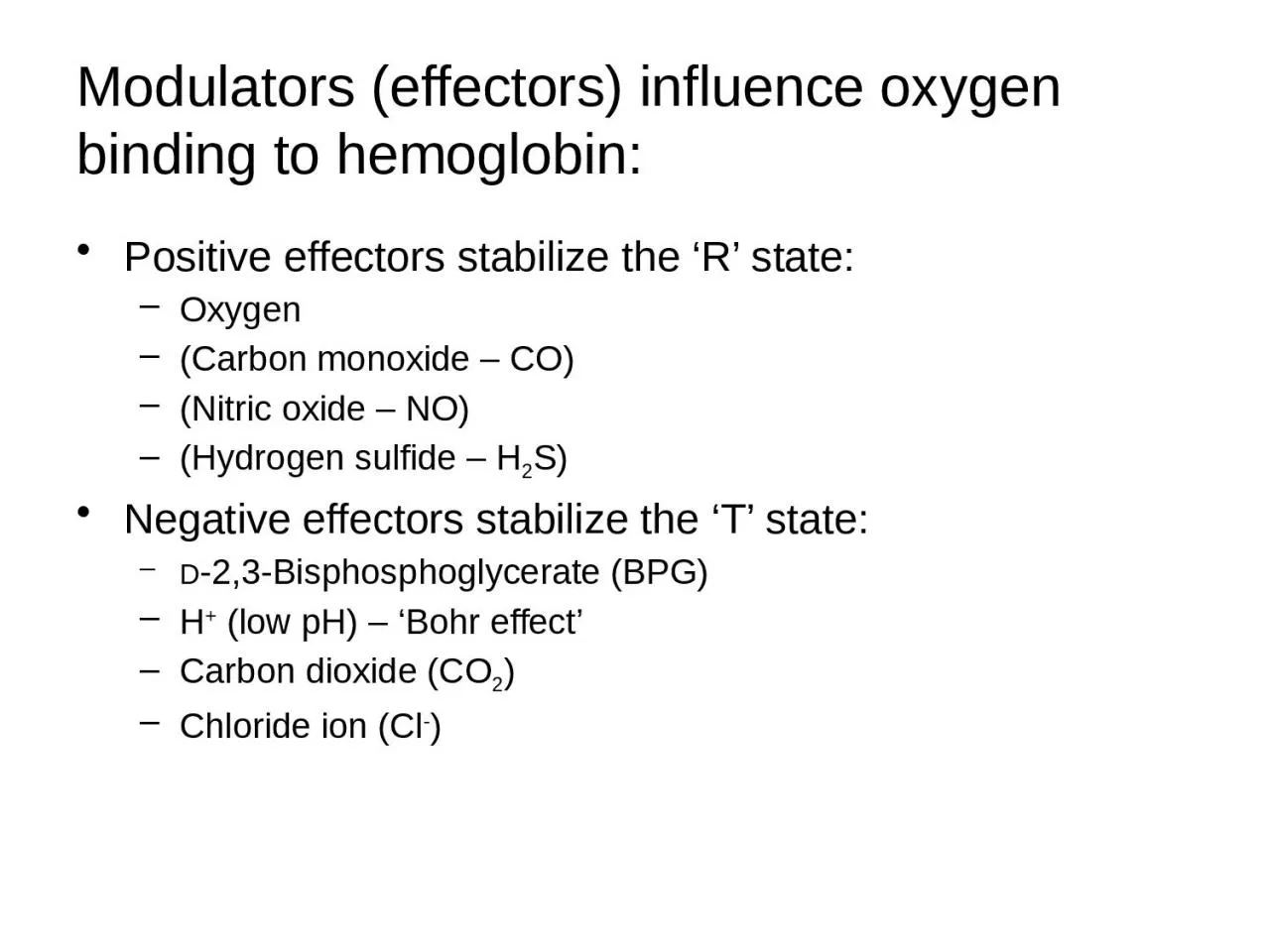

Positive effectors stabilize the R state Oxygen Carbon monoxide CO Nitric oxide NO Hydrogen sulfide H 2 S Negative effectors stabilize the T state D 23Bisphosphoglycerate BPG ID: 928442
Download Presentation The PPT/PDF document "Modulators (effectors) influence oxygen ..." is the property of its rightful owner. Permission is granted to download and print the materials on this web site for personal, non-commercial use only, and to display it on your personal computer provided you do not modify the materials and that you retain all copyright notices contained in the materials. By downloading content from our website, you accept the terms of this agreement.
Slide1
Modulators (effectors) influence oxygen binding to hemoglobin:
Positive effectors stabilize the ‘R’ state:
Oxygen
(Carbon monoxide – CO)
(Nitric oxide – NO)
(Hydrogen sulfide – H
2
S)
Negative effectors stabilize the ‘T’ state:
D
-2,3-Bisphosphoglycerate (BPG)
H
+
(low pH) – ‘Bohr effect’
Carbon dioxide (CO
2
)
Chloride ion (
Cl
-
)
Slide2Negative effectors in the blood enhance Hb’s ability to release oxygen
Slide3Slide4BPG binds in the center of the tetramer, forming salt bridges with + charged groups
Slide5The cavity for BPG binding is only present in the T-state tetramer
T-state
R-state
Slide6The body can quickly increase BPG levels to enhance oxygen transfer at high altitude
~4 mM
BPG
~8 mM
BPG
Slide7The Bohr effect: Lowering pH reduces Hb’s oxygen-binding affinity
Slide8Lower pH increases the liklihood of protonation and salt-bridge formation
Slide9The action of carbonic anhydrase lowers blood pH at the tissues and raises blood pH at the lungs, enhancing O
2
and CO
2
transfer
Slide10The chloride-bicarbonate exchanger helps increase the CO
2
-carrying capacity of blood
Increased [
Cl
-
] stabilizes T-state (via salt bridges), thus promoting release of O
2
Slide11Carbamate formation enhances O
2
and CO
2
transfer between the lungs and tissues
Slide12Slide13Mutations alter
Hb
function in different ways
Slide14In sickle-cell anemia, mutant Hb can aggregate, leading to sickle-shaped RBCs
Slide15The mutant Val of sickle-Hb can bind in a hydrophobic pocket of a T-state
β
-chain
Binding of many T-state tetramers results in the formation of long, rigid fibers
Slide16Sickle-hemoglobin fibers can burst the cell
Slide17The sickle trait provides resistance to malaria, hence its prevalence in certain populations